Acute. Later, GP
The Forest Hospital for Buckhurst Hill, Loughton, Chigwell, Abridge, High Beech, Chingford and Sewardstonebury opened in 1913 with 21 beds. The Lord Mayor of London had laid the foundation stone in 1912, and the costs of the building had been donated by a local family. The new Hospital replaced the Village Hospital and the Medical Provident House in Buckhurst Hill, which both closed.
The weekly cost of an in-patient in 1913 was £1 5s (£1.25).
In 1921, following a successful fund-raising campaign, the Hospital closed for two months, from 13th July until 5th September, so that it could be extended and the wards redecorated. The Duke of Connaught officially opened the new building in October that year. It contained three rooms for private patients, new nurses' quarters and an X-ray room (the X-ray apparatus was installed in 1922). The female ward in the original building had also been enlarged.
By the end of the decade patients came from a wide area. The district covered a large acreage, but with no great density of population in any one location. The Hospital catered for two types of patient - those who occupied the general wards and could pay a small contribution, either directly or through membership of a Hospital Savings Association or kindred society; and those who could pay moderate charges for private or semi-private beds but who could not afford the fees of a nursing home.
In 1929 the Hospital closed for six weeks for complete redecoration and enlargement of the ward accommodation. It then had 40 beds. The cost of an in-patient per week was £4 2s 3d (£4.11), compared with £3 8s 5d (£3.42) in 1928 (in 1930 it would be £3 13 8d (£3.68).
In 1933 the Hospital celebrated its 'Coming of Age' with a Garden Party on June 23rd.
Whilst the new bed accommodation had not immediately been used, as the population of the area increased, so more patients were admitted. New staff were appointed, causing overcrowding of the nurses' quarters. In 1934 building work began on an extension of the nurses' wing at a cost of £2,200. Expected to be completed by March 1935, the Nurses' Home was completed early and was occupied in February. In November of the same year a new portable X-ray machine was installed. At this time the cost of an in-patient was £4 2s 6d (£4.12) a week, compared to £3 18s 6d (£3.92) in 1934. Almost a third to a quarter of admissions were accident cases.
During WW2 the Hospital joined the Emergency Medical Service with 40 beds.
The Hospital joined the NHS in 1948 as a general hospital with 44 beds. It came under the control of the Forest Group Hospital Management Committee, part of the North East Metropolitan Regional Health Board.
By 1960 it had been designated a GP hospital. In 1961 the cost of in-patient was £31 8s 6d (£31.42) a week, compared with £30 19s 10d (£30.99) in 1959/60.
In 1974, following a reorganisation of the NHS, it came under the auspices of the Redbridge and Waltham Forest Area Health Authority, part of the North East Thames Regional Health Authority. It had 42 beds.
By 1977 it faced the threat of closure.
In 1982 it had 40 beds. After another NHS reorganisation, it became part of the Waltham Forest District Health Authority, who managed it ex-territorially as the Hospital lay physically within the area of the West Essex Health Authority.
By 1985 it had become a small, well-run General Practioner hospital with 35 beds, a Physiotherapy Department, and a busy X-ray Department. It had a Day Centre with 20 places which provided companionship to elderly patients and a few hours' relief for their carers. But, again, it was threatened with closure and this time it did not survive. It closed in 1986.
Present status (March 2008)
The building has been refurbished and extended. It is now Forest Place, a 90-bedded nursing care home for the elderly owned by the Abbey Total Care Group.

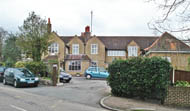
The former Hospital, as seen from Roebuck Lane.
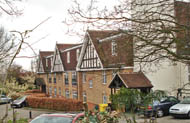
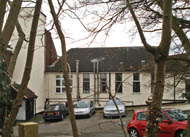
The buildings, seen from the path on the north side.
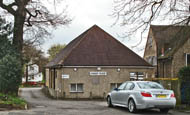
The driveway to the Maple wing of the care home.

Nothing to do with the former Hospital, but next door to it: the gateway into Linder's Field Local Nature Reserve, which is named after Leslie Linder (1904-1973) who collected the drawings of Beatrix Potter.
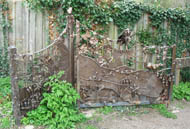
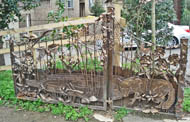
The steel gates by Paul Richardson are decorated with local woodland creatures and plants. They were installed in 2002.
(Author unstated) 1911 Reflections from a Board Room mirror. British Journal of Nursing, 23rd September, 253.
(Author unstated) 1921 Items of interest. British Journal of Nursing, 29th October, 272.
http://hansard.millbanksystems.com (1977)
http://hansard.millbanksystems.com (1985)
http://hospitalshistory.multiply.com
www.flickr.com
www.british-history.ac.uk
Return to home page